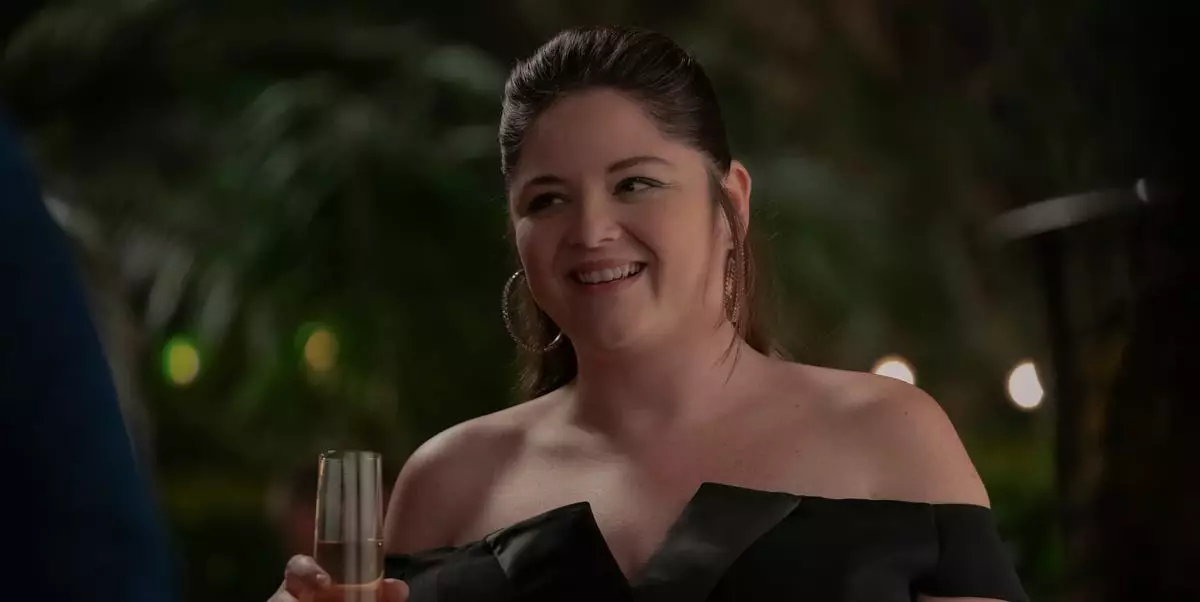The intricate tapestry of character development is often the hidden gem of television narrative, allowing viewers to step deeper into the story than mere plotlines can reveal. In the case of “Hacks,” resurrected by the creators’ insight and authenticity, the character Kayla stands out as a vivid embodiment of modern-day entitlement filtered through an endearing quirkiness. When co-showrunners Lucia Aniello, Paul W. Downs, and Jen Statsky envisioned Kayla, they deftly drew from the vivid realm of sketch comedy to encapsulate the specific, often oblivious nature of someone stepping into the chaotic arena that is Hollywood.
Meg Stalter’s casting played a pivotal role in Kayla’s formation. The brilliance of Stalter’s comic sensibilities shone through during her chemistry read with Downs, setting the stage for a character that thrives on spontaneity while also embodying the characteristic “flaunt it if you’ve got it” mindset. The showrunners realized early on that Kayla needed to be more than just a reflection of privilege; they aimed for a promising depth that continues to reveal itself throughout the four evolving seasons.
Privilege and Perspective: The Duality of Kayla
The dichotomy of privilege between Kayla and Jimmy, another central character, portrays a fascinating narrative of familial background and personal growth. As Stalter’s Kayla navigates her new role from an entitled assistant to a somewhat competent manager, her awareness of her privileges transforms. One intriguing layer of her character is seen in how her relationship with Jimmy shapes her understanding of responsibility. While Jimmy’s background appears to foster a sense of humility, Kayla is left grappling with a paradox—brainstorming wild ideas that often alienate her but also thrust her into the limelight.
Co-showrunner Aniello points out how this flawed character represents anyone groping toward self-improvement, likening her to an unreliable compass of wit and outrageous decisions. It’s that duality—striving for success while tripping over her own ridiculousness—that turns Kayla from a frustrating figure into an emblem of comic resilience. The audience, through Jimmy’s kindness and patience, gradually learns to appreciate her hilariously misguided attempts and oddly inspired bouts of creativity.
Redefining Relationships Through Growth
The relationship dynamics within “Hacks” bear a striking resemblance to real-world partnerships, where two seemingly incongruous personalities can push one another toward greater heights. Jimmy, portrayed as thoughtful yet ambitious, provides a crucial foil to Kayla’s capricious flair. Their mentor-assistant dynamic slowly unfurls into something more profound—a relationship nurtured by recognition and mutual respect.
As Jen Statsky articulates, their shared struggles and triumphs constitute a relationship built on listening and leaning into each other’s strengths. Statistically speaking, partnerships thrive on respect, and Jimmy’s ability to see potential in Kayla, even when it seems camouflaged by her exasperating choices, leads her toward self-acknowledgment. The moment when Jimmy publicly acknowledges her capabilities—a gesture as simple as a sign listing her name first—becomes a watershed moment. It reaffirms Kayla’s worth, challenging her to re-assess her own view of herself and the unique contributions she can offer.
Characterization Through Authenticity
The effort behind Kayla’s evolving character isn’t limited to writing alone; it spills over into wardrobe choices and performance styles that underscore her identity. Costume designer Kathleen Felix-Hager collaborates closely with Stalter, creating an authentic representation of Kayla’s vibrancy, ensuring the audience sees not merely a character but a relatable individual standing tall amidst the chaos. Their partnership exemplifies how character visualization can breathe life into storytelling, transforming a mere representation into an identity that resonates with viewers.
Moreover, the writers effectively use humor to cloak deeper issues—here, the systemic issues surrounding privilege and entitlement bubble beneath the surface. They transform Kayla’s superficial silliness into poignant revelations hidden beneath layers of laughter, proving that comedy can often serve as a vehicle for social commentary. Stalter’s portrayal finds its weight not only in fun antics but also in the introspection that derives from confronting her shortcomings with a humorous lens.
Kayla’s journey may no longer dwell on shades of entitlement alone; it blossoms into a much richer exploration of identity, relationships, and growth. As the series progresses, audiences are beckoned to embrace and empathize with a character who, at first glance, appears comically flawed but ultimately is yearning for a place in an unforgiving industry.

